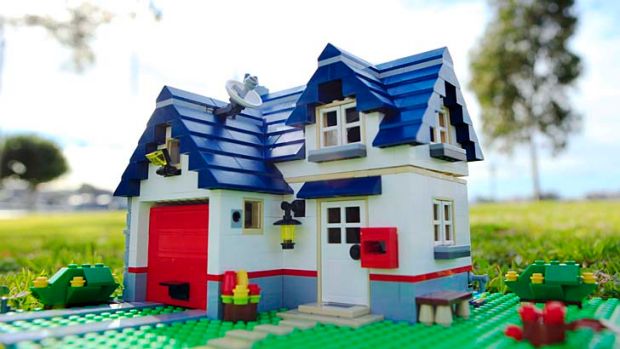MOST of us have focused on the cash-rate cycle recently, but there’s another cycle I’m interested in: property.
Australian property prices were inflated leading up to 2007-08, and when the GFC came along, they started falling. Property prices fell more drastically in some of the major cities than in others. But really feeling the hit from the GFC was investment property. Many investment apartments were liquidated, often at a loss, as confidence evaporated and households switched their outlook from debt to savings.
But it could be time to look again.
There are a few observations behind this: first, interest rates are near 50-year lows and we are in a low cash-rate cycle that is likely to endure until global economic forces stop looking so volatile. So debt is relatively cheap.

Second, the Real Estate Institute of Australia is talking about rental vacancies in capital cities at very low rates, meaning strong demand for rental properties. Third, although house prices are now moving upwards in some cities, it’s a slow recovery nationally, meaning there is value for smart buyers.
Finally, employment is still strong in Australia, meaning lenders see complying home borrowers as low risk. If you have a job and 20 per cent equity, you can find a lender for an investment property.
Where would you start? I like to calculate the costs (loan repayments, insurance, maintenance, rates, management fee) and offset them against the rental income.
Personally, I would rather make a profit on my property and pay the tax than be negatively geared, which entails booking a loss. I like “yield” on any business I invest in. This means buying well and having good equity in the property, so the costs don’t overcome the revenues.
However, not everyone wants yield and if you want to negatively gear a property you must ensure you have an adviser because the ATO does not accept mistakes in your calculations.
But for the basics of what to look for in an investment property, I really like the checklist used by RUN Property:
- Location. Buy close to shops, train stations and schools.
- Scarcity. Art deco and Victorian dwellings are scarce, which increases demand.
- Features. Properties with views, outdoor living spaces or units with off-street parking attract premium rents.
- Demand. Look for median-valued properties, markets with low rental vacancy rates and regional infrastructure that can support employment.
- Capital growth. Increasing property prices build equity or profit that can be used to expand a portfolio, reduce debt or finance lifestyle.
- Rental yield. Strong rental income finances investment and builds a portfolio with a cash-flow buffer that protects against debt worry. Cash flow is king!
- Buy value. Aim to make money when you buy, not when you sell.
- Presentation. Properties that look good rent well.
- Potential. What can this property be turned into?
- Compromise. Write a list of factors you want in a property and aim for the main targets. Rarely will the first purchase be your dream home. Use it to kick-start your property portfolio.
- Be creative. Consider buying an investment property while you rent. By renting where you want to live and buying in an area you can afford, you can get a foot on the property ladder.
As for “where”, I think you have to start by deciding if you need to live close to your investment or if you don’t mind a management company looking after it for you in another city or region.
Let’s assume you’re happy to own anywhere. Tim Lawless, RP Data’s national research director, has some great property figures via the RP Data Home Value Index.
His research shows that across the major cities over the quarter, Darwin is the standout for rental yields: Darwin houses yielded 5.9 per cent and units 6 per cent, while Melbourne houses (3.6 per cent) and units (4.5 per cent) were the worst-performing rental yielders in the eight major cities.
Most investors also look for capital gain in the property, and the RP Data figures are interesting for several different reasons. In the year to October, only three cities in the country have seen values in property rise: Darwin (8.6 per cent), Perth (3.5 per cent) and Sydney (0.6 per cent).
It’s worth looking also at supply and demand. In Melbourne, the supply question is still sorting itself out when it comes to apartments, which in the 12 months to October went backwards 6 per cent.
Regionally, it’s the mining and resources areas where rental yields are strongest. Isaac Council, located in the heart of the Bowen Basin coal-mining district, and houses at Port Hedland provide high gross rental yields.
When it comes to owning rental property, always do your homework, speak with experts and be realistic (not greedy).
And good luck.

